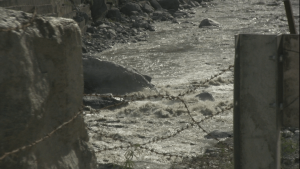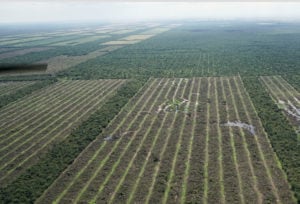My grandfather gave me a book when I was a child, “Jungle Lore” by Jim Corbett. It is a lovely little book of short pieces by one of the great writers of the early 20th century, and imbued in me a love for the forests and an appreciation of how a jungle is a complex habitat, with its own rules and signposts.
A whiff of that comes across in Syed Rizwan Mahboob’s “The Silent Wild”; there is even a chapter that carries the same name, “Law of the Jungle”. The story in Corbett’s book is about two children lost in the jungle, only to be found unharmed by a buffalo-herder after almost three days. Corbett muses how they would have survived in a jungle where all manner of animals, including tigers, were resident, and in his gentle prose, points out that the law of the jungle is far kinder than humans consider it. Mahboob’s essay walks some of the same ground, illustrating the thrift, the caution, and the balance that nature and its creatures maintain in the jungle, and how much better human society would be if it did the same.
A former forester who joined Pakistan’s Civil Service, Mahboob’s book is a series of reminiscences of his time spent in the wilderness – mountains, deserts, canal sides – and the various people and creatures that inhabit them. The love of these wild places is obvious, and Mahboob does a very good job in setting many of them in their historical contexts. This is apparent in his opening essay, dedicated to, and about, the various guards who used to manage the many old forest lodges in various parts of Pakistan, the dishes that were their speciality, or the treasure trove of old books he found.
Maybe most touching is the story of the Hindu families living in the man-made Daffer jungle in Pakistan’s Punjab province. A whole village of Rajputs had moved from near Aligarh in India’s United Provinces (now the state of Uttar Pradesh) after “having committed the most unpardonable crime of their times – maltreating and thrashing an area Patwari (lower grade land revenue official) for his unending extortions” during the time of British rule. With their lands confiscated, and their houses demolished, they found work on the Lower Jhelum Canal, which was completed in 1910. Then, as a man-made forest of teak was being built nearby, they found permanent work there. Mahboob takes pains to illustrate their contribution to their habitat, and the crisis of Partition in 1947, which would have forced them to be uprooted yet again, based on their religious identity. Pleading with the local authorities, they found support in the form a Range Forest Officer, a Mr Khawaja, of Kashmiri ancestry, who shifted his headquarters to their area to protect them. And there they stay.
Not all stories have happy endings. There is the tale of Suzi the elephant, and the terrible transformation of Lahore zoo into a fortress of barbed wire and limitation of the space for the residents. There is the death of Lalu, the lame Royal Bengal Tiger, finally bested in a fight by an albino tiger, dying quietly in the bushes. There is also an insightful essay on the role of Saeens, or saints, who live in the forest. In this essay Mahboob talks about how these local saints, held in much awe for their holiness, and subject of much gossip, have an inextricable connection to the forests that they inhabit, usually in some rudimentary habitation, with nothing much in terms of material goods.
The story of the Saeen he recounts, though, also illustrates how unthinking land development, often with little thought or understanding of environmental consequences, can lead to sudden tragedies, as the fragile young Himalayas erupt in landslides. Titled “Curse of the Blue Pines”, the essay describes how the town in the mountains is almost completely destroyed. The Saeen had warned the people, citing landslides that destroyed his own village due to “indiscriminate rock blasting for road construction”. They did not listen, and paid the price.
In its own way, Mahboob’s compilation of essays is a bit like the Saeen’s warning; a gentle reminder of how much beauty Pakistan has, and how it is neglected. Much of the writing on Pakistan is because of its political troubles, but Mahboob does a service to the wild places he has loved by bringing them front and centre, and showing that there is more to Pakistan than just that, but only if its citizens want to preserve the beauty that has been gifted to them.
The Silent Wild, by Syed Riswan Mahboob, National Book Foundation, Islamabad
![<p>Only a little grass and a few animals grazing near the Deosai National Park, as climate change has affected fodder growth and has forced people to sell most of their livestock [image by: Amar Guriro]</p>](https://dialogue.earth/content/uploads/2018/09/16-B.jpg)


![Fears of river diversion have led to protests against a Chinese funded hydropower project in Kashmir [image by: Ghulam Rasool]](https://dialogue.earth/content/uploads/2019/03/Neelum1-Ghulam-Rasool-300x200.jpg)





![Amne Machin, a sacred mountain on the Tibetan plateau, which is changing far quicker than the world realises [image by: Joshua Cohen]](https://dialogue.earth/content/uploads/2019/02/The-Tibetan-plateau-is-changing-far-quicker-than-the-world-realises-300x225.jpg)